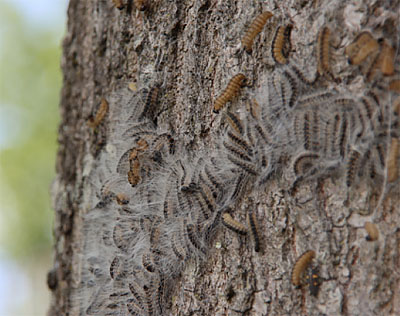Elmbridge Borough Council have issued the following update relating to the increased prevalence of oak processionary moths in our area.
Oak processionary moth (OPM) was accidentally introduced into England in 2005. Today, OPM poses a threat to Britain’s oak trees and is hazardous to the health and wellbeing of humans and animals who come into contact with it. OPM is present in the South East of England and in Elmbridge.
Elmbridge Borough Council follows Forestry Commission guidelines in dealing with OPM on its land. Our role is to protect our oak trees and their associated wildlife by managing the spread of OPM, minimising its impact on oak trees and protecting the public.
There is no single solution to managing OPM. We adopt a local risk-based approach which is informed by our local oak tree population, its associated biodiversity and the severity of OPM infestation.
When risk assessing each site, we:
- look at each nest according to its location, and the risk to residents and pay particular attention to densely populated areas and the proximity to vulnerable individuals, for example, children, infants and elderly
- control high risk areas by spraying (Spring) or removing nests manually (Mid-June – August), where appropriate, and manage low risk areas through on-site information
OPM around Weston Green, Ditton Common and Littleworth Common
This OPM season, it has become clear that there is a greater density of OPM in the Oak trees around Weston Green, Ditton Common and Littleworth Common than in other areas in Elmbridge. This degree of density is unusual and appears to be established rather than declining. In normal cases we would expect to see population increase followed by a decline in following years.
Due to the unprecedented spread of OPM in this area, and its close proximity to densely populated area, we are commissioning specialist nest removal in high-risk areas during the next few months. This may cause some minor disruption to accessibility around these areas. Additional signage will be placed in the area to warn passers by. To help reduce the issue next year, we have commissioned spraying to take place between Mid-April to Mid-May (dependent upon seasons).
We will update our website and communications before that happens.
For more information, please see Oak processionary moth.

